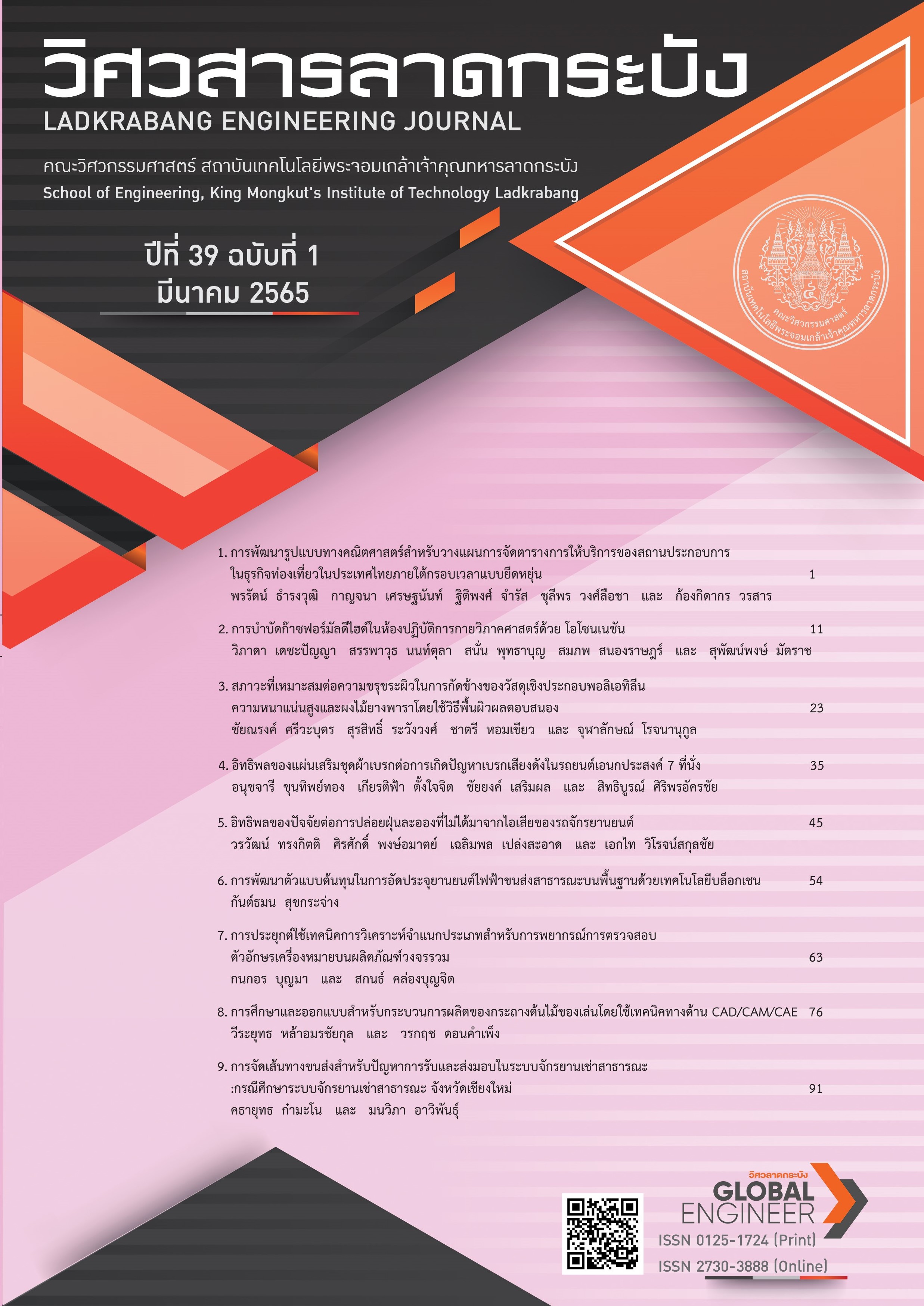The study and Design for Manufacturing Process of toy plant pot using CAD/CAM/CAE Technique
Keywords:
Plastic Injection Mold, Numerical Simulation, Computer Aided ManufacturingAbstract
Toy plant pots are used to organize children's classrooms and theme park. Today, most of the toy plant pot parts are made of plastic material by injection molded. Most of the plastic injection molded parts are produced by CAM. InventorCAM is Computer Aided Manufacturing (CAM), developed and used in manufacturing and design processes in the automotive industry. InventorCAM has been supporting and plugins for Inventor Professional Program. InventorCAM is available only in the manufacturing collection. In this work, researcher is designed plastic model of toy plant pot and injection mold base, consisting of sprue, runner, sub runner and gate. After that, plastic parts are used to simulate the injection molding process to simulate the positioning of gate injection. In addition, researcher also design of standard part for plastic injection molded and the both in the core and cavity of mold plastic injection using module mold design of Inventor Professional version 2014. Therefore, this study can be used to study plastic injection mold together with the use of InventorCAM program appropriately. Nevertheless, the results obtained from simulations and the improvement of higher performance for plastic injection would be optimum for development of better toy plant pot production for SME business.
References
S. Nazma, Md. Raihan Quader, Md. Jakaria and Md. H. Rahmn, “SolidCAM iMachining (2D): A Simulation Study of a Spur Gear Machining and G-code Generation for CNC Machine,” International Journal of Mechanical Engineering and Automation, vol. 3, no. 1, p. 1–9, 2016.
M. P. Groover and E. W. Zimmers, “Conventional Numerical Control,” in: CAD/CAM: Computer-Aided Design and Manufacturing, New Jersey, USA: Prentice-Hall, Inc, 1984, pp. 113
F. David and H. Ron, “CNC Machining Plastic Injection Mold Plates in the Classroom,” in 37th ASEE/IEEE Frontiers in Education Conference, Milwaukee, WI, USA, Oct. 10–13, 2007, pp. 12–17, doi: 10.1109/FIE.2007.4417886.
P. Izol, M. Tomas and J. Beno, “Milling strategies evaluation when simulating the forming dies functional surfaces production,” De Gruyter Open Eng, vol. 6, pp. 98–105, 2016, doi: 10.1515/eng-2016-0013.
J. Varga and E. Spisak, “Influence of the milling strategies on roundness of machined surfaces,” Acta Mechanica Slovaca, vol. 24, no. 3, pp. 20–27, 2020, doi: 10.21496/ams.2020.001.
M. Ficko, J. balic, I. Pahole, J. Senveter, S. Brezovnik and S. Klancnik, “Expectations of automatic programming of CNC machine tool,” Advances in Production Engineering and Management, vol. 5, no. 3, pp. 193–199, 2000.
Z. Rutkauskas and A. Bargelis, “Knowledge – based method for gate and cold runner definition in injection mold design,” Mechanika open access, vol. 4, no. 66, p. 49–54, 2007.
L. Werayoot, “The design of Plastic Injection Mold using Finite Element Analysis,” Narasuan University Engineering Journal, vol. 11, no. 1, pp. 101–109, 2016.
O. Thanit and T. Prawit, “Analysis of the Flow front on the Cup of Injection Mold.” Rajamangala University of Technology Suvarnabhumi, Phranakhon Si Ayutthaya, Thailand, Research. Rep. 1–97, 2014.
L. Dalio, R. Francesco, B. Federico, C. Matteo, Q. Danilo, Z. Yang and T. Guido, “Experimental Validation of Injection Molding Simulations of 3D Micro parts and Micro Structured Components Using Virtual Design of Experiments and Multi-Scale Modeling,” Micromachines, vol. 11, no. 6, pp. 614, 2020, doi: 10.3390/mi11060614.
H. H. Chang, C. A. Hieber and K. K. Wang, “A unified Simulation of the Filling and Post-Filling Stages in Injection Molding. Part I Formulation,” Polymer Engineering & Science, vol. 31, no. 2, pp. 116–124, 1991, doi: 10.1002/pen.760310210.
Downloads
Published
How to Cite
Issue
Section
License
Copyright (c) 2022 Faculty of Engineering, King Mongkut’s Institute of Technology Ladkrabang

This work is licensed under a Creative Commons Attribution-NonCommercial-NoDerivatives 4.0 International License.
The published articles are copyrighted by the School of Engineering, King Mongkut's Institute of Technology Ladkrabang.
The statements contained in each article in this academic journal are the personal opinions of each author and are not related to King Mongkut's Institute of Technology Ladkrabang and other faculty members in the institute.
Responsibility for all elements of each article belongs to each author; If there are any mistakes, each author is solely responsible for his own articles.






